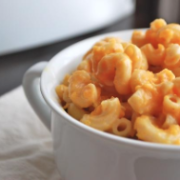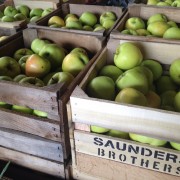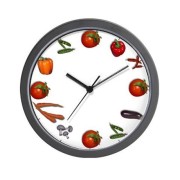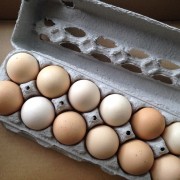Thanksgiving Gameplan
Happy Thanksgiving from Seasonal Roots! Hosting this year? If not, how about a delicious side dish to bring to your host? We’ve got you covered.
Marinated Mesclun Greens Salad
For the Salad:
8-10 ounce container of mesclun salad mix from Harvest Hill Farm, washed and dried and possibly chop any larger pieces
½ pint of cherry tomatoes, cut in half
About ½ of a yellow onion, sliced very thin
For the Marinade:
¼ cup apple cider vinegar
1 T tamari or soy sauce
2 T olive oil
1 tsp fresh ginger
1 tsp honey
Directions: Using a blender or stick blender, blend all of these ingredients together until emulsified. Toss all of the salad ingredients together in a bowl to make sure they are combined well then pour over the marinade and gently massage into the salad mixture. Cover and let sit for 15-20 minutes. Serve cold
________________________________________________________________
Creamy Kale Salad
Ingredients:
1 bunch of black kale, washed and chopped
¼ cup of tahini
¼ cup of lemon juice
¼ cup of olive oil
1 tsp sugar
1 tsp salt
1 tsp pepper
1 tsp cayenne
A small handful of grape or cherry tomatoes, cut in half
Half of red onion, sliced
Directions: In a small bowl whisk together tahini, lemon juice, olive oil, sugar, salt, pepper and cayenne until all are combined well. Now, either using gloves or with very clean hands gently massage the dressing into the kale making sure to cover all of the kale. The heat from your hands will help to breakdown the kale. Toss in the tomatoes and onions and serve.
________________________________________________________________
Caesar Salad
Ingredients:
2 small or 1 large head of romaine lettuce — washed and dried
1 large garlic clove — minced
5 small anchovy fillet — approx 2 tablespoons
1 tablespoons lemon juice — fresh squeezed
1 egg + 1 egg yolk
1/3 cup Parmesan cheese — shredded
1 1/2 tablespoons Dijon mustard
2 teaspoons Worcestershire sauce
1/4 teaspoon pepper — freshly ground
1/2 cup extra virgin olive oil or avocado oil
salt to taste
1 cup croutons
Directions: Chop cleaned and dried lettuce into bite-size pieces. Set aside. Mix garlic in lemon juice, set aside. Place anchovies, egg, egg yolk, Parmesan, mustard, Worcestershire sauce, and pepper in a food processor and blend until anchovy is chopped fine. Add lemon juice and garlic; blend until incorporated. With the processor running, pour in the oil in a slow, steady stream until emulsified and incorporated. Add salt or more lemon juice, to taste. Chill for at least 15 minutes before dressing salad. Toss with romaine lettuce and croutons just before serving. Sprinkle with additional Parmesan and fresh-cracked pepper, as desired.
________________________________________________________________
5 Spice Roasted Root Veggies
Ingredients:
1-2 loose carrots, cut into 1 ½ inch long pieces
1-2 turnips, peeled and cut into ½ inch cubes
1-2 white potatoes, washed and cut into ½ inch cubes
1 each gold beet and red beet, washed and cut into ½ inch pieces
2 T olive oil
Salt
3 T plus 2 tsp. Chinese 5 spice powder
Directions: Preheat your oven to 425 degrees. In a large bowl toss together all of the root veggies with the salt and 5 spice powder and just ¼ tsp of olive oil. Place the roots on a sprayed baking sheet and place in the oven uncovered for 25-30 minutes. Rotate your sheet pan at about the 15 minute mark. In a small bowl whisk together the rest of the olive oil and about 2 t of the 5 spice powder and a little more salt. Check the roots by piercing them with a knife and if the knife does not meet resistance then they are ready to come out of the oven. They may need to bake for a little longer in some cases. Once you remove them from the oven drizzle the oil and spice mixture over the hot resting roots. Serve warm.
________________________________________________________________
Roasted Green Beans with Herbed Vinaigrette
Ingredients:
2lb. green beans trimmed
¼ cup grated Parmesan cheese
3 cups of mushrooms (optional) cleaned and sliced
¼ cup red wine vinegar
2 T burgundy or red wine
½ tsp salt
½ tsp black pepper
1 cup olive oil
2 tsp minced garlic
1T chopped fresh Thyme
1 T chopped fresh Marjoram
1 T chopped fresh Rosemary
3 shallots minced
Directions: Bring a large pot of boiling water to a boil on the stove while you trim the ends from your green beans. Once the water is boiling blanch the green beans for about 2 minutes. Drain and rinse under cold water and let drain for at least 20 minutes. In a bowl combine vinegar and wine. Whisk in salt, sugar, and pepper until the sugar has dissolved. Slowly pour the olive oil into the bowl while whisking rapidly to blend together. Next, whisk in garlic, thyme, marjoram, rosemary. Next, (using a spoon in a scraping motion from the bottom of the bowl up the side of the bowl) fold in the minced shallots. Store in the refrigerator covered for at least 45 minutes. Preheat your oven to 300 degrees. Combine green beans, sliced mushrooms and 1 cup of vinaigrette in a bowl and mix to cover all of the green beans. Place the green bean mixture on a roasting pan and cook uncovered for 12-15 minutes. Remove from oven place into your serving dish and pour over 1 cup of the vinaigrette and sprinkle with Parmesan cheese. Serve warm.
________________________________________________________________
Sweet Potato Casserole
Ingredients:
4 cups of sweet potatoes, peeled and cubed
½ cup of sugar
2 eggs, beaten
½ tsp salt
4 T butter, softened
¼ cup milk
¼ pineapple juice
½ tsp vanilla extract
½ cup packed brown sugar
1/3 cup all purpose flour
3 T butter, softened
¾ cup chopped pecans
Directions: Preheat oven to 325 degrees. Put sweet potatoes in a medium saucepan with water to cover. Cook over medium heat until tender, drain and mash with ¼ cup pineapple juice. Add this mixture to a large bowl and add sugar, eggs, salt, butter, milk and vanilla extract. Mix together until smooth and transfer into a 9×13 sprayed baking dish.
In a medium bowl mix together brown sugar and flour, cut in the butter until the mixture is coarse. Stir in the chopped pecans and sprinkle over the top of the sweet potato mixture. Bake for 30 minutes or until the topping is lightly browned.
________________________________________________________________
Grandma’s Yams
(A second option for your sweet potatoes)
Ingredients:
5-6 Sweet Potatoes
3 T Brown Sugar
1 T Maple Syrup or Honey
1 T salt
3 T butter
½ T ground Nutmeg
Directions: There has been some debate in our family of whether or not you slice your sweet potatoes for this dish or just simply cut them in half long ways to roast (cut side down). Either way the result will be the same. A warm yummy and delicious way to eat more sweet potatoes! Start by preheating your oven to 325 degrees. This cooks best in a glass baking dish. Simply place the sweet potatoes in a sprayed baking dish and sprinkle over the brown sugar and nutmeg over each piece. Place a small bit of butter on each one as well and start to roast them covered for about 45 minutes. Remove them from the oven and drizzle over the maple syrup or honey, recover and roast about another 10-15 minutes. Bring them out of the oven, uncover and spoon over the liquid that is on the bottom of the dish. Raise the oven temp to 400 and finish roasting for 10 minutes uncovered then serve right away!!
________________________________________________________________
Dreamy Mashed Potatoes
Ingredients:
5-7 white potatoes, cleaned (leave the skin on) and cut into 2” pieces
3 T butter
1 T sea salt
1 T black pepper
¼ cup buttermilk (or sour cream)
¾ cup milk or alternative
Directions: Start by boiling the cut potatoes in salted water for 20-25 minutes. Drain potatoes from the water and return back to the hot pan. Over low heat let the potatoes steam out for about 1-2 minutes. At this point if you are using a mixer, transfer the cooked potatoes into the mixer. If you are not just remove the pot from the heat. Add all of the other ingredients and mix on low for 4-5 minutes to incorporate everything. Turn the mixer up to a higher speed for 2-3 minutes or until the potatoes become creamy and if you need a little more liquid add a ¼ cup milk or alternative at a time. Enjoy right away!!

















